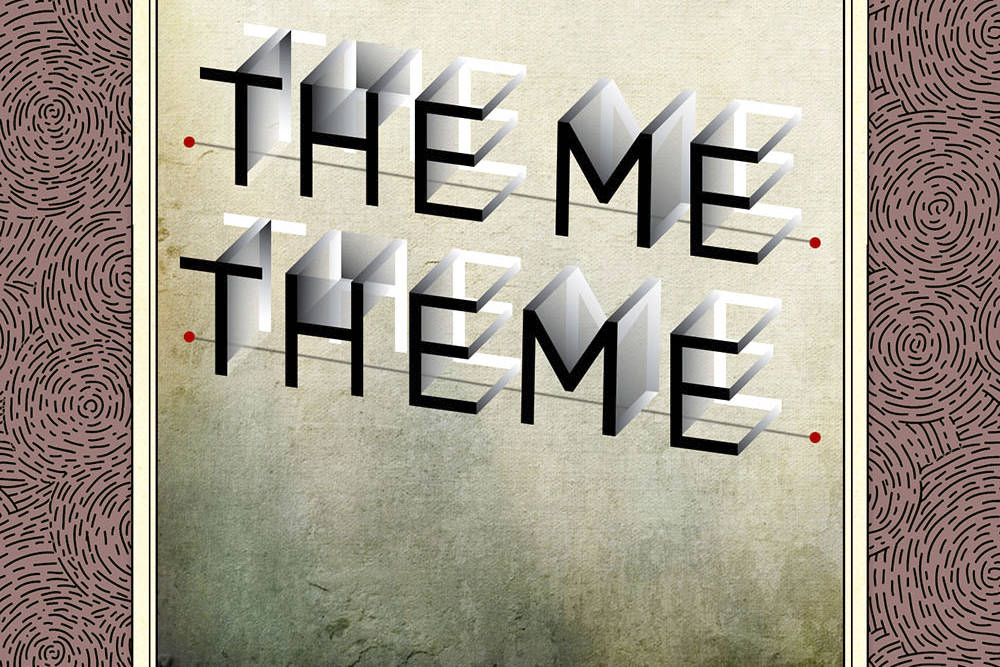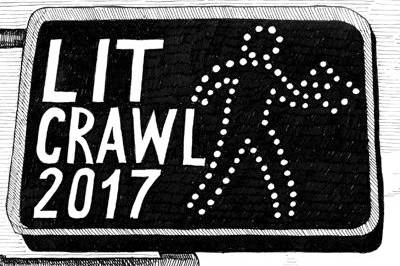No writer in Seattle is more interested in words than Doug Nufer: in the shape of words, the multiple meanings they carry, their sound when spoken aloud, their look aligned on the page next to each other. He is at once a brilliant writer and a curious lexicologist. Every new book from Nufer is a kind of Jurassic Park for words—a place where he investigates the very DNA of language, to see what happens when he introduces constraints and discovers patterns, then unleashes them into a new environment.
Nufer’s latest book, The Me Theme, is a tiny little pocket-sized thing. The designers at Sagging Meniscus Press crafted the poetry collection into a disguise: It looks stately and trim, like a self-help book from the 1930s, the kind that confidently warns readers to drink only steaming hot water and avoid ice cubes in order to maintain the viscosity of their humours. Wrapped in such an authoritative package, the linguistic jokes Nufer pulls off feel a little more dangerous and anti-establishment than they would between more playful covers. If you believe that words are sacred delivery systems for meaning, Nufer will reach out from The Me Theme and cheerfully tweak your nose.
Most of Nufer’s books hew to some literary high concept—typically a constraint of some sort. He’s written a novel that doesn’t use any word twice (Never Again); he’s placed bets for three fictional characters at Emerald Downs, then incorporated them into a novel (By Kelman Out of Pessoa); he’s told a story entirely in negative statements (Negativeland). This time he’s exploring repetition and a tautology of spelling in a book that reads like a never-ending echo of itself.
To give you an idea of what Nufer is pulling off with The Me Theme, here’s the very first line: “O pen, open an aesthetic anaesthetic tome to me.” Get it? “O pen” is a plea to Nufer’s pen, and it bounces back immediately with “open.” Same with “tome” and “to me,” which is maybe the most straightforward example of the book’s narrative trick. The real work in this sentence, though, is “an aesthetic anaesthetic.” This is serious stuff: the same set of letters twice, but with two very different meanings. Arranged in this order, Nufer seems to be calling for The Me Theme to be a beautiful but numbing experience.
Turns out Nufer’s wish doesn’t come true: The Me Theme is anything but anaesthetic. Instead, it’s engaging, a book best read with a dictionary in hand and patience in your heart. At first blush, many of its lines seem like nonsense, but with a little effort a reader can coax much meaning from Nufer’s constraint-based obfuscation. I particularly like this passage about belief and nothingness:
“The or-ist theorist
A verse averse
A version aversion
The ism theism
A theism atheism”
It’s a passage that abuts opposites and forces the reader to think about how two words with the same roots can mean something so completely different. As a reader, you can leave The Me Theme thinking that words mean nothing or that words mean everything. Of course, both are true.
The Me Theme Reading. Gallery 1412, 1412 18th Ave., gallery1412dotorg. wordpress.com. Free. All ages. 7 p.m. Thurs., June 22. Paul Constant is co-founder of The Seattle Review of Books. Read books coverage at seattlereviewofbooks.com.








